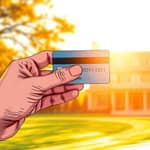
Buying a home is one of life’s most significant milestones, yet the hurdle of a down payment can feel insurmountable. Potential homeowners often look for creative funding solutions to bridge the gap between where they are and where they want to be. Among these options, a personal loan can seem tempting for its speed and flexibility—but is this approach realistic or even allowed?
In this article, we’ll unpack the fundamentals of down payments, compare personal loans and mortgages, explain why lenders usually reject borrowed down payment funds, and offer actionable strategies to build savings without risking your mortgage approval.
A down payment is the upfront amount a buyer pays toward a home purchase, reducing the loan balance. In most cases, it ranges from 3% to 20% of the purchase price, depending on the mortgage program and borrower profile.
For example, on a $350,000 home a buyer might need anywhere from $10,500 (3%) to $70,000 (20%). With the average U.S. home price near $500,000 in Q2 2024, a full 20% down payment now equates to $100,000 for many buyers.
While larger down payments can improve loan terms, they demand substantial cash reserves. Smaller down payments open doors to homeownership but often bring higher monthly costs, added mortgage insurance, and more interest over time.
Many borrowers consider using a personal loan to cover the down payment because funds arrive quickly and without collateral. However, personal loans and mortgages serve distinct purposes and carry very different terms.
Key contrasts include:
Almost all major mortgage lenders forbid using borrowed funds for the down payment. They require seasoned funds—savings, documented gifts, or retirement assets—to demonstrate financial stability and reduce default risk.
When a buyer presents a personal loan on bank statements, underwriters may view it as a red flag. The sudden influx of debt signals potential inability to manage both the mortgage and the loan, jeopardizing loan approval.
If a lender did allow a personal loan for a down payment, the borrower would face multiple challenges:
In short, even the appearance of using a personal loan can trigger additional scrutiny, delays, or outright rejection of the mortgage.
Rather than borrowing for a down payment, consider these proven paths:
Each approach carries its own requirements and potential downsides, so research and plan wisely to ensure it aligns with your long-term financial health.
Securing a down payment may take time, patience, and disciplined saving, but the payoff extends far beyond obtaining a mortgage. By using accepted sources of funds, borrowers strengthen their financial profile and lay the groundwork for sustainable homeownership.
Start by setting clear goals: determine your target down payment, create a monthly savings plan, and explore every assistance program available in your area. Consult reputable housing counselors for personalized guidance and explore lender criteria early to avoid surprises at closing.
Remember, the journey to your dream home is as meaningful as the destination. By choosing responsible funding strategies and avoiding shortcuts like personal loans for down payments, you build a stable financial foundation, reduce stress, and protect your credit.
Ultimately, homeownership is within reach when you pair ambition with informed planning. Take control of your roadmap, leverage the right tools, and move toward your future with confidence.
References













